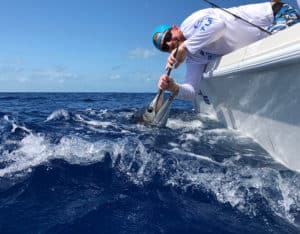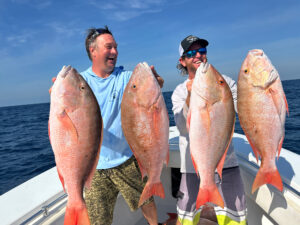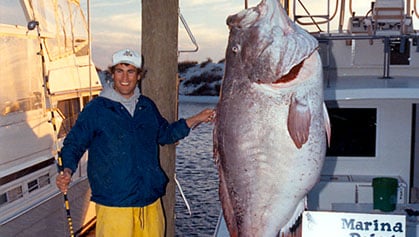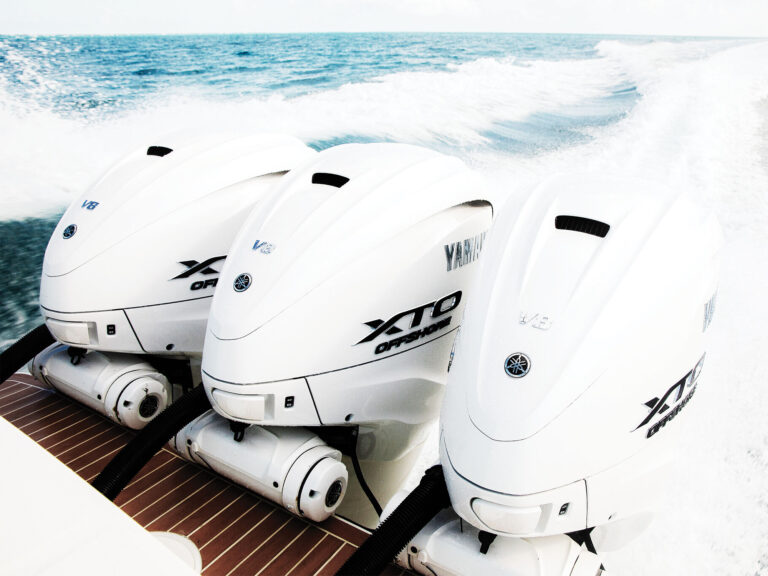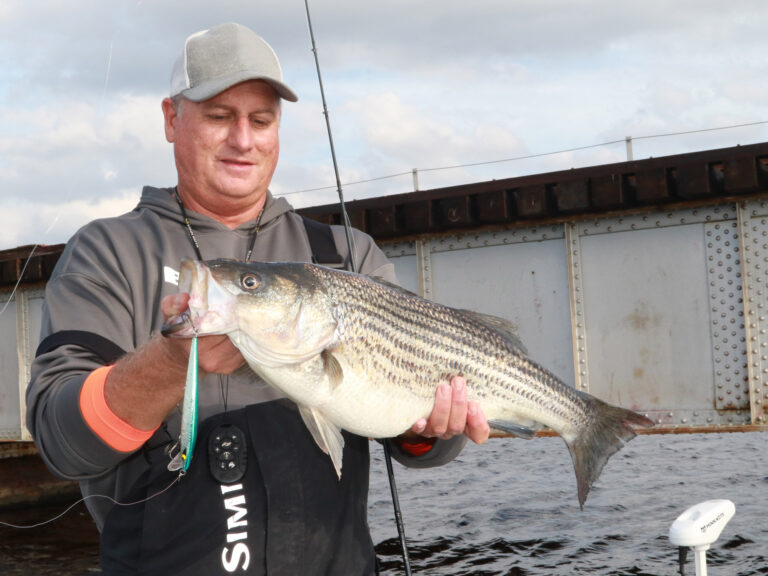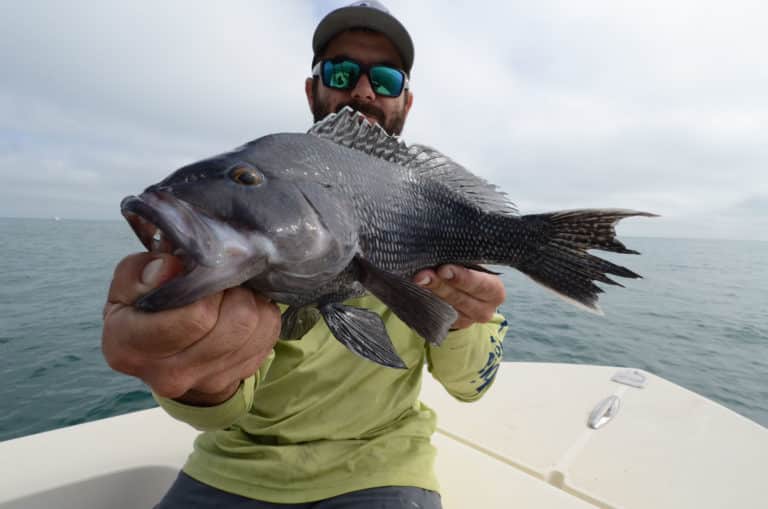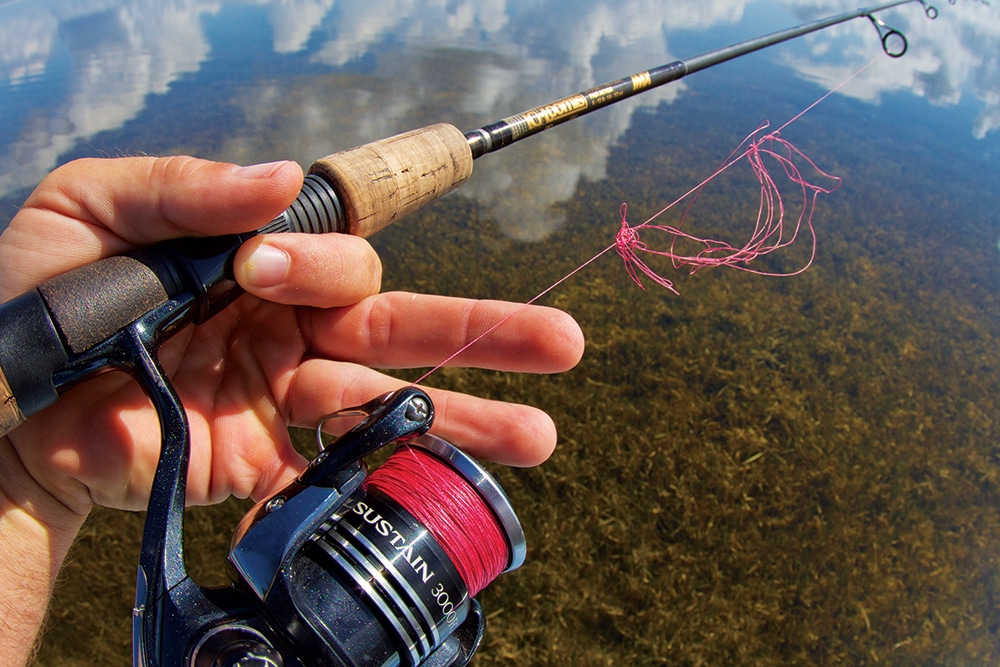
I really thought I had wind knots figured out. Those annoying braid boogers and bird nests were no-shows through my rod guides for months. But on a recent flats-fishing trip, a nasty wind knot in my 10-pound braid forced me to rack my rod. The truth is that wind knots in braid are almost entirely the fault of the angler. Blaming my tackle wouldn’t fix my tangles from casting braided line.
What Causes Wind Knots in Braided Line?
Numerous line companies independently admitted there isn’t a silver-bullet solution to their manufacturing processes that could help anglers prevent wind knots.
“One of the most prominent characteristics of braid that allows wind knots is its lack of memory on the spinning spool,” says Ben Miller, at Sufix. “Braid releases and unwinds far better than traditional nylon monofilament for much longer casts, but this freedom has its pros and cons.”
A wind knot is created by an overrun of slack line that’s slipped off the arbor of your spinning reel. The slack line then forms a loop within the spinning reel when the bail is closed. Once it’s time to cast, you might be able to cast away that looseness, but chances are a snarl, tangle or knot is inevitable. That’s why your braided line might keep tangling.
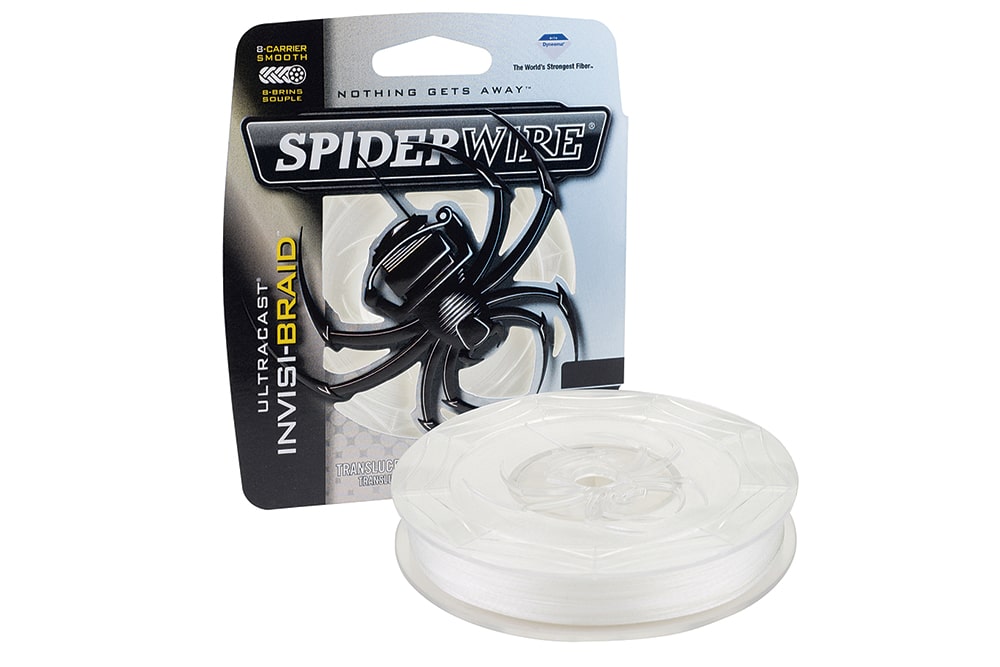
“Wind knots are truly a byproduct of spinning tackle,” says Miller. “A wind knot to a spinning reel is the same as a backlash to a baitcasting reel.”
Manufacturers often add proprietary coatings to braids for numerous reasons, one of which is to give the line some body. Braided lines used for extended periods eventually lose their coatings, increasing the potential for wind knots in braid.
“I’m not a fan of braids with minimal coating,” says Joe Meyer, at Spiderwire. “They trap water and get heavy, but also they become very limp without much body to them. A little more body, or simply moving up to heavier weights of line, tends to cause fewer tangling issues.”
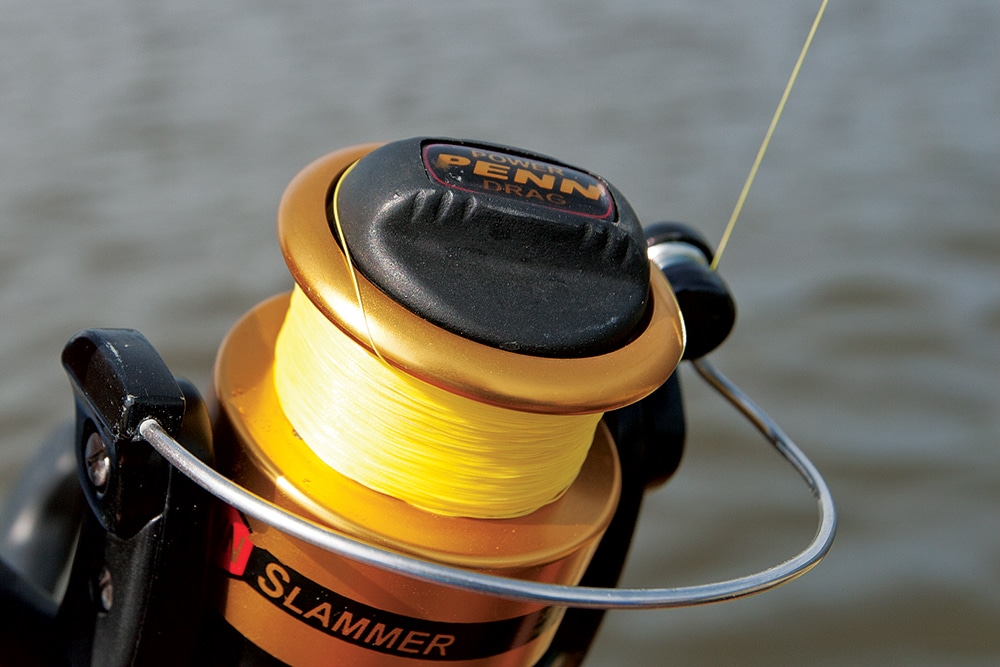
How to Stop Wind Knots When Casting Braid
The most important mindset an angler can have when it comes to braid is to always keep his line tight. And that starts when adding line to your spool; double-check that your braided line is applied under pressure. Anglers who use a line winder to fill their spinning reels must be careful, says Miller. When anglers use line-winding machines to load spinning reels, the line doesn’t rest on the spool the same way it does once a reel has been cast.
“Do not overfill the spool on a spinning reel, since that can easily cause wind knots,” says Capt. Jot Owens, of Wrightsville Beach, North Carolina. “I like to go about three quarters full, leaving 1/8- to 1/16‑inch space to the outside edge.”
Many anglers complain that freshly spooled braid causes wind knots, but Owens has found a helpful solution.
“I will tie on a 1-ounce sinker and cast hard a dozen times,” he says. “This seems to really help cut down on the ‘break-in period,’ when I see the most wind knots.”
When casting while fishing, I keep my hand near the spool, and “finger” the line just as the lure is about to hit the water. Braid closest to the lure stops, but if you’re not careful, line closer to the reel keeps coming off the spool, causing loops. I always close the bail by hand — making sure not to turn the handle to close the bail — before reeling. If there’s a wind-blown bow in your line from casting, reel in your line carefully to pick up slack before working your lure.
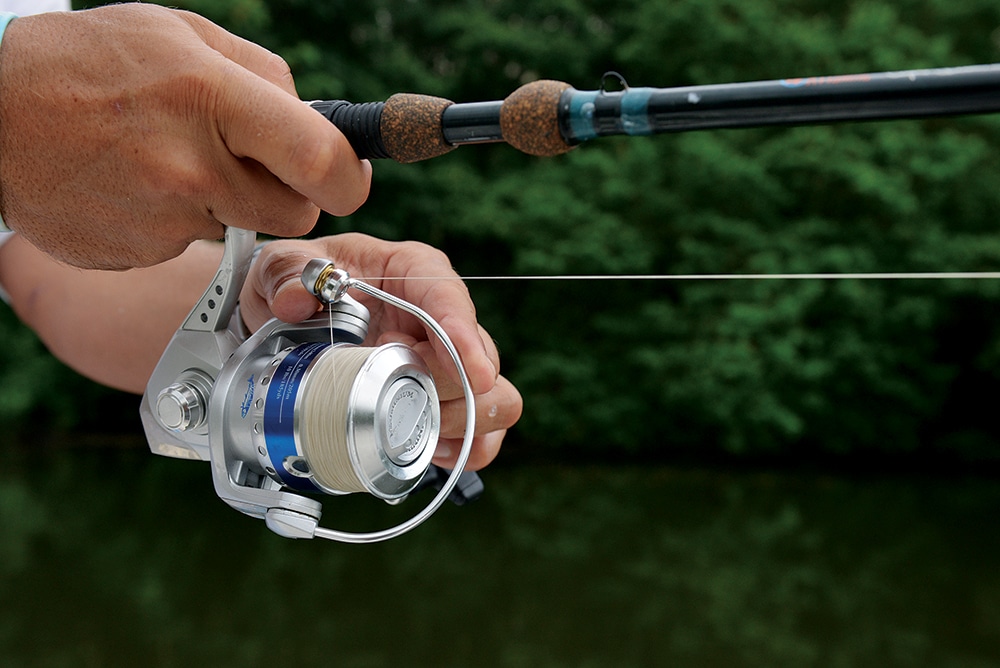
Twitching the Rod Can Cause Wind Knots in Braid
One apparent paradox that even an experienced fisherman must contend with is how to prevent wind knots when using baits such as soft-plastic jerkbaits and walk-the-dog topwaters that continually require suddenly slacking off in a tight line. Add wind into the equation, and it’s very tough to keep all slack out of the line.
“What I try to avoid is broad movements of the rod,” says Capt. Billy Wells, of Venice, Louisiana, and a Seaguar pro staffer. “Zero stretch in braid means you don’t have to move the rod tip as much to walk the dog or set the hook.”
Wells often doesn’t move the rod tip at all to work a twitchbait — he controls all movement at the reel using a half-crank and pause retrieve. Light soft-plastic baits that require twitching and jigging mean less line tension on the spool. That loose line often digs into the reel when put under the pressure from a fighting fish, so expect the next couple of casts to be short as the line frees from itself.
“For a bait that does require twitching of the rod tip, make the twitches as small as possible,” says Wells. “Reel as you twitch to help cut down on the amount of slack in the line.”
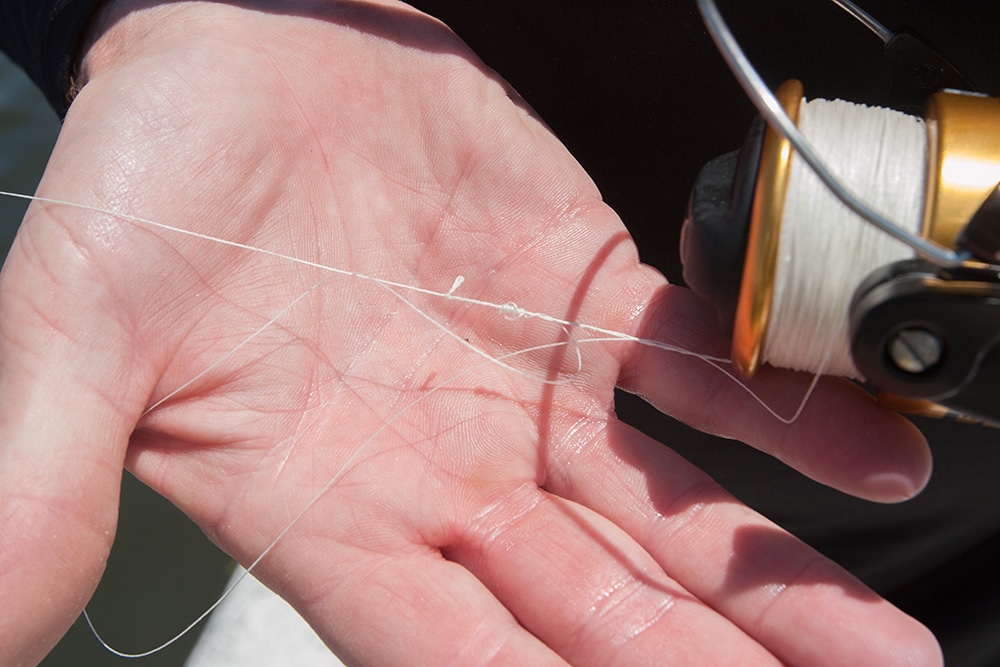
Your Fishing Rod or Reel Can Cause Wind Knots
If you’re certain it’s not your actions causing the wind knots, take a detailed look at your spinning-reel setup.
“Wind knots may occur after a sudden acceleration at the beginning of the cast, when the braid collides into the rod guides and causes a loop that continues to accelerate,” says Capt. John Stacey, Northeast regional sales manager for Cortland Line.
Some new rods use low-profile guides designed specifically for thin, braided lines. Older rods used for throwing mono traditionally needed larger guides to reduce the friction of the mono against the guides.
“Braid guides should be smaller, because braid is thinner and subtler,” says Stacey. “If you’re using an older-style mono rod with big circle guides, you’re just asking for trouble in river city.”
Examine your spinning reel, and confirm that the spool rotates properly when winding or it could cause knots, points out Meyer. I make sure my braid is stacking consistently from top to bottom, and not bunching up at either end. Also, see if there’s any wobble in your spool when cranking. Inspect the line roller at the bail to make sure it’s clean and free moving. If the roller is stuck in place, it can force line twists into the line without an angler ever knowing.
And about that spinning setup that I had to rack? I realized the old, faded braid didn’t have a chance when I fished topwater lure in windy conditions. I respooled with heavier, 20-pound braid and haven’t had any trouble since.
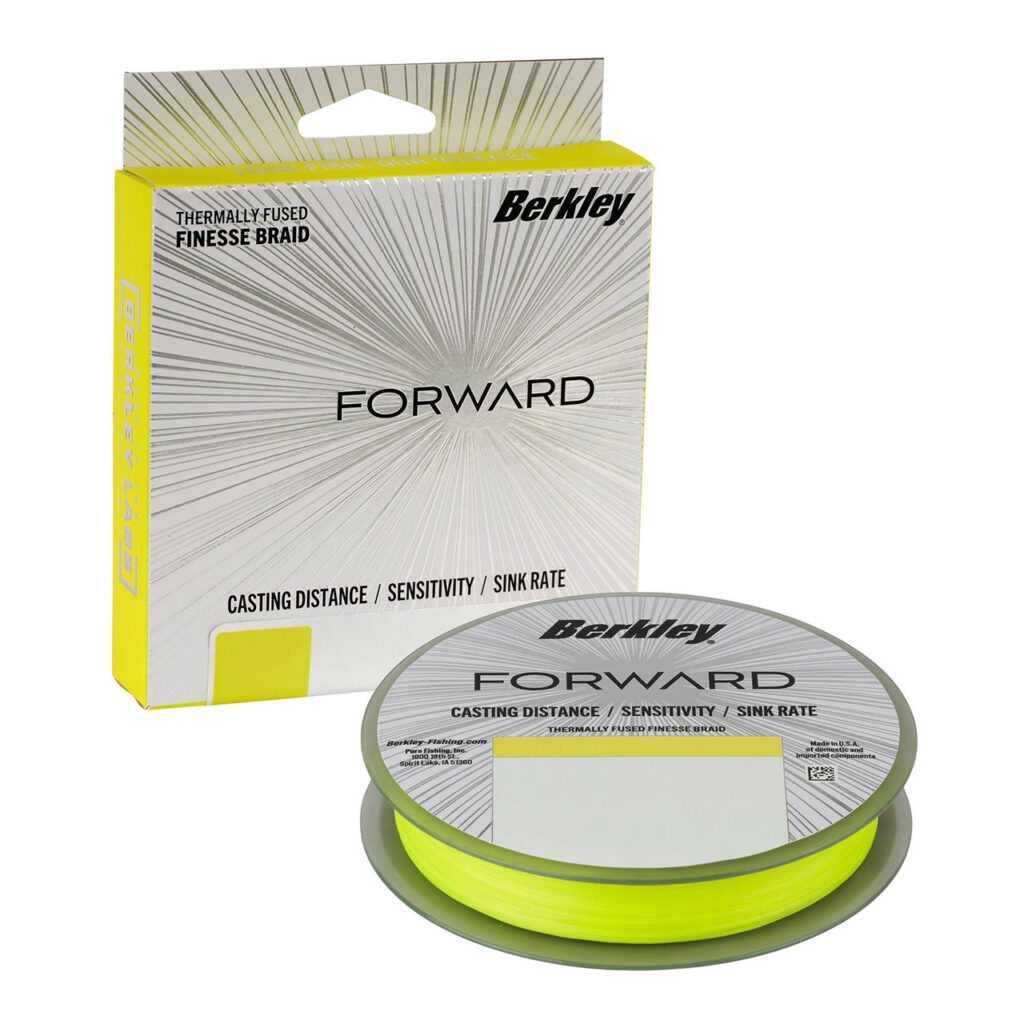
Time to Respool?
One of the great attributes of braid is longevity. You can spool up and forget about it for a whole season, depending on how much action it sees. Just be sure keep tying on fresh mono or fluoro leaders. When you do start noticing wear on the line, if you’re getting more wind knots or if its performance is generally falling off, it’s time to respool. The following are some good high quality braided lines:

